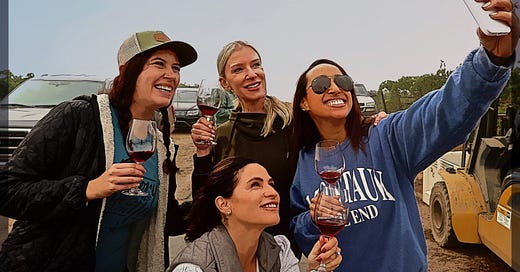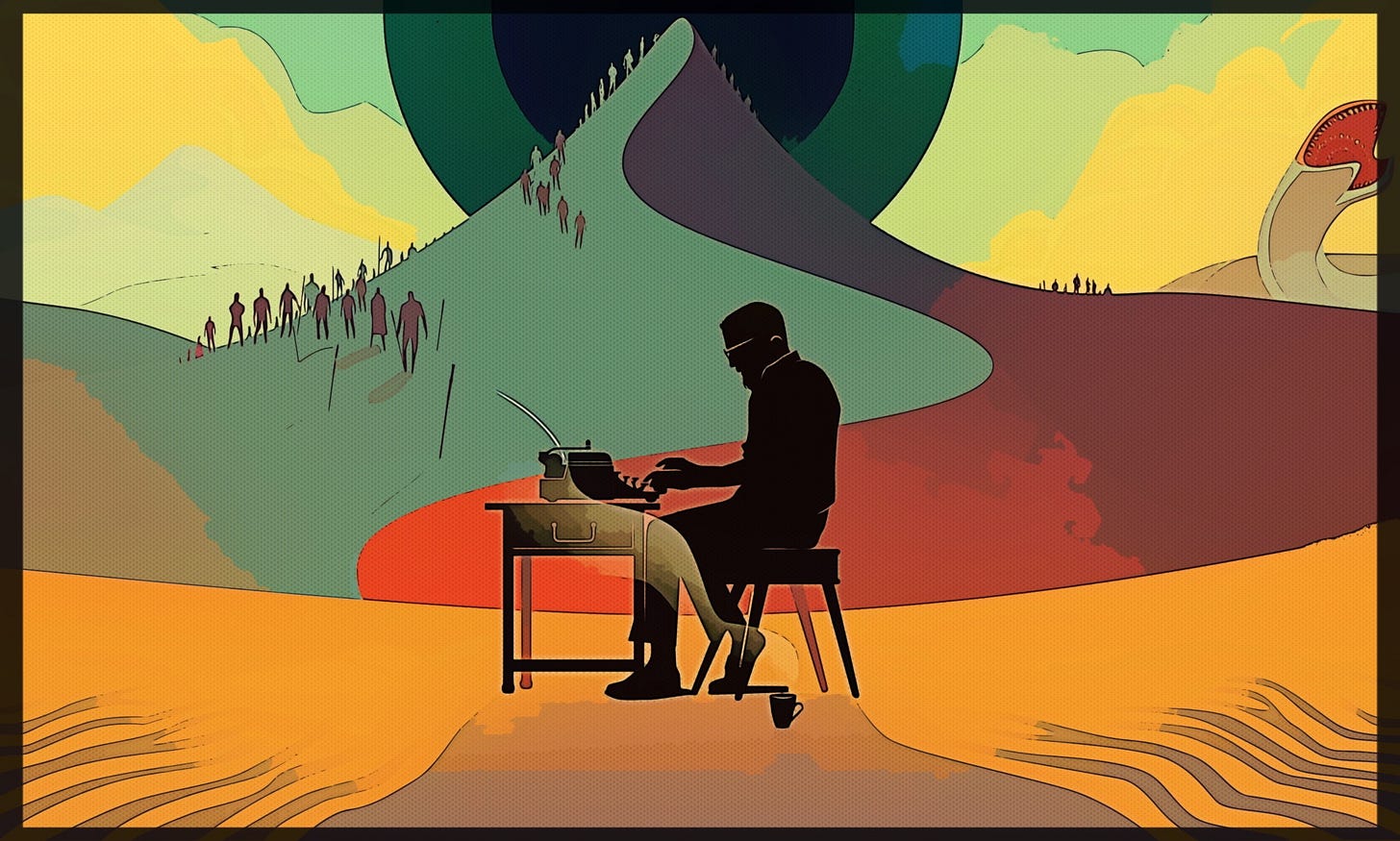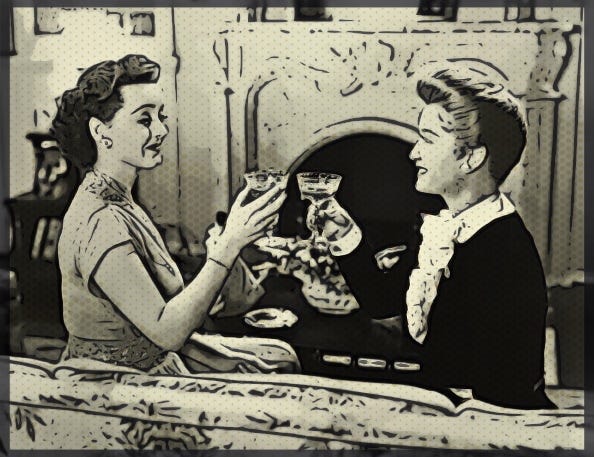How can we end the dumbing down of wine reporting?
Wine, wine everywhere, nor a drop to drink
As I write, I am preparing to leave Lodi, a region I have endeavored to present in a thoughtful, intelligent way over the past fifteen years. That is, as a place of historic vineyards, hardscrabble farmers and special terroirs, not just as another source of assembly line products. Has it all been in vain? No, if you have faith in the ultimate wisdom of consumers, which I do. I will continue to fight the good fight from elsewhere. Don’t wish me luck, wish it on all of us who appreciate good, authentic wine. Oh, and don’t forget to support the struggle by signing on as a paid subscriber to The Wine Clarion. Please. My best, RC
How can we reverse the continuous dumbing down of wine reporting?
No, I am not talking about the proliferation of wine influencers. Over the past few years I've met, and spent quite a bit of time with, a good number of these creatures of social media. Virtually every one of them has struck me as being among the smartest, savviest people in the industry when it comes to pure wine knowledge. What's made them dangerous, of course, is their mastery of means by which wine, and every product for that matter, is now sold. They command the attention of huge swaths of the consumer base that have long eluded the wine production, marketing and advertising industries.
Just for the way they are teaching the rest of the wine industry how to reach customers—and better yet, at nominal cost and effort—we should all be thankful for wine influencers. Even conventional wine media is copping their methodology. If you're not learning from them, you're probably having a hard time staying in business.
Nor am I talking about wine bloggers. What has it been—twenty or so years since this medium seemed to burst upon the web like the Big Bang? The sheer number of bloggers has dramatically shrunk in recent years, as undoubtedly the number of significant wine influencers eventually will. The monetization pie can only be divided so much.
The wonderful thing about wine blogging was that it leveled the playing field. Consumers no longer needed to depend upon information put out strictly by a handful of mainstream print magazines, the sales and media outlets, or the extremely narrow number of wine book authors the publishing industry has traditionally been willing to print. In the blogosphere, information began coming from seemingly everywhere, like the endless number of worlds populating the Duniverse.
The horrible thing about wine blogging was that so much of that information was either bad or banal. The more wine bloggers were out there, the less original the content. At one point—I’d say ten years ago—almost every wine blogger was writing about pretty much the same subjects, the same wines and established wineries, or the same "cool" winemakers, ad nauseum. That's because almost every wine blogger was writing from the comfort of their dining room table, their bed or living room couch, so all they ended up doing is copying each other's blogs. Very few of them were actually visiting wine regions, walking through vineyards, talking to growers or winemakers, discovering "wine" for themselves.
The dearth of primary sourcing was bound to be the death of wine blogging; and no doubt, this has come to past.
Still, you cannot blame wine bloggers for keeping the current state of wine reporting in something of a "dumb" stage. The dumbing down came a lot earlier, probably somewhere between the 1970s and 1980s, when wine media began adopting the standard wine industry attitude that wine consumers in general are, basically, of low intelligence. Consumers "think dry and drink sweet," it was always said. Or, they are incapable of understanding, and appreciating, much more than three, four, maybe five different "varietals" at a time. Or, if you lavish wines with oak qualities, whether through barrel aging or profligate oak amendments, consumers will love it, since the vast majority can’t tell the difference between real and fake. So much of what the wine industry thinks about the market is extremely cynical. Assuming the absolute least about consumers.
The older, gray haired wine professionals and consumers, oddly enough, can still recall the 1960s and early '70s when it was the odd wine that was generously oaked or over 13.5% alcohol. The days when California wineries typically produced at least a dozen different varietals or blends, usually much more than that. Somewhere along the line wineries began reducing their SKUs by at least half or a quarter. Despite the fact that there are hundreds of grapes grown around the world making wonderful wines, in the U.S. varieties such as Riesling, Silvaner, Gamay, Grignolino, Green Hungarian, Charbono and Chenin Blanc all got the axe. Our domestic wine world shrank to Cabernet Sauvignon, Chardonnay, Pinot Noir, Merlot and Sauvignon Blanc. Maybe Pinot Grigio, plus Zinfandel, but not much more than that.
Worse yet, to get consumers to understand the hierarchy of wines around the world, especially in the U.S., the prevalent thought was that they needed to be presented with a numerical system of wine rating. You cannot expect, by this way of thinking, consumers to possibly understand wines if you go too deep into origins or history; much less differentiating descriptions of vineyards and sensory attributes. No wonder most wine reviews sound alike. They are more like laundry lists consisting of the same words and phrases, simply rearranged. It's like we're doing our best to either bore consumers to death or narrow them down to the same ship of fools.
What's also self-defeating is forcing consumers to understand wines only in terms of "varietal character"—as if all varietals need to meet some kind of universal standard—or the predictability of brands, rather than as expression of where they are grown. You would think the industry prefers that consumers think of wine as a manufactured product; something popping out of wineries as the result of technological magic, rather than as the laborious agricultural product that it actually is.
It's even been asserted, very recently, that terroir—while very much the basis upon which every European appellation system is built—no longer exists in the commercial wine world. That it is now more of a myth, perpetuated by elements in the industry with a sinister agenda. Imagine that. The grizzled old school farmers and vignerons are now the bad guys, keeping the industry from doing its good work. Heaven forbid, we confuse consumers with the concept that the character of wines might be connected to what happens in vineyards.
If anything, this treat-consumers-as-if-they're-stupid approach has only slowed down the evolution of awareness and appreciation of wines. The entire industry—grape growing, production, distribution, trade, and especially the media—has been complicit in this. I'd say we've wasted, maybe, a good twenty or thirty years with this approach: The dumbing down of wine. Consumers would be a lot more sophisticated today if we had given them more credit from the very beginning for being capable of absorbing information, and all the wonderful complexities and nuances that make appreciation of wine—at least, real and authentic wines—so compelling.
Now we’re reaping what we’ve sown. An industry in the doldrums.
This approach, mind you, has been a peculiarity of the wine industry. The food and restaurant industries, by way of contrast, are extremely diverse. There does not seem to be an end to the culinary products consumers are able to absorb and appreciate. The same, of course, goes for literature, music, film, art, or any technology from phones to cars. The average consumer does not need to be treated like five-year-olds in order to get them to grasp advanced, sophisticated ideas. They don't need 100-point-scores to guide their purchases. They have an endless capacity to grasp new products and information. Why do we think they can't possibly do the same when it comes to wine?
If wine reporting has been dumbed down, it's because the industry has done that to itself. Not everyone, of course, but the industry as a whole. I would also suggest that it's the segments of the wine industry that assume their customers are intelligent that end up being leaders of the pack. In fact, at long last, the tastes and intelligence of American consumers have dramatically expanded over the past few years, despite the best efforts of most of the industry to narrow them down.
Now more than ever, independent American wineries are offering more of the types of wines—especially those that are varied, innovative and terroir driven, the way all the world's finest wines have been appreciated for centuries—that wine lovers have craved all along. As usual, though, these independents are the small fry. It’s not like popular music, where even garage bands have a shot at glory.
The wine industry as a whole is still under the thumb of the big producers who dominate the shelves like schoolyard bullies. And the few big name journalists whom everyone apes but are just as clueless about what’s recently been happening to the industry as everyone else. As Randy Newman sang, I’m dead but I don’t know it.
If you persist in assuming most people are stupid, then stupid is what you get. It's your smarter competitors who are ending up with all the smart customers.









I concur 💯. I for one personally seek out family-run small to mid size producers in Europe. The quality is high, the acid begs for food, and the terroir, welll, with every sip, the wine continues to evolve and impress. Especially when tasting authoconous grapes from Italy & Portugal.